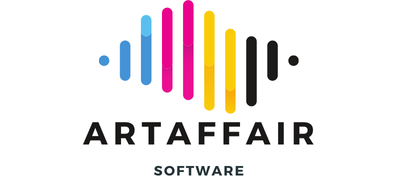When you invest in a Dell XPS 13 and a Thunderbolt 3 dock, you’re setting up a robust system designed for expanded connectivity. However, maximizing the potential of this setup requires a few best practices to ensure everything runs smoothly. This guide provides comprehensive steps on how to effectively configure your Thunderbolt 3 docking station to enhance your Dell laptop experience.
Understanding the Thunderbolt 3 Docking Station
To fully exploit the benefits of a Thunderbolt 3 dock, it’s crucial to understand its key features and functionalities. Thunderbolt technology offers high-speed data transfer, power delivery, and the ability to connect multiple devices simultaneously.
This might interest you : How do you optimize the cooling performance of a Cooler Master NR200P for a high-end gaming rig?
Thunderbolt 3 docks can support:
- Multiple USB ports including USB Type-A and USB Type-C.
- Various display outputs such as HDMI, DisplayPort, and even QHD mDP.
- High-speed data transfer rates up to 40Gbps.
- Power delivery to charge your laptop.
- Daisy-chaining multiple devices.
For Dell laptops, especially the Dell XPS 13, the Thunderbolt dock can significantly enhance your system‘s connectivity options, turning it into a versatile workstation. By following a few best practices, you can ensure all connected peripherals function seamlessly.
Also to discover : How can you effectively use a TP-Link Archer AX11000 for a high-speed gaming network?
Setting Up Your Thunderbolt 3 Dock
Setting up your Thunderbolt 3 dock involves more than just plugging it in. To avoid common issues, follow these steps carefully:
Updating Firmware and Drivers
Before connecting any devices to your Thunderbolt 3 dock, ensure your Dell XPS 13 is up-to-date. Visit the Dell Support website and download the latest firmware and driver updates for your system. This step is crucial for maintaining compatibility and performance.
Connecting the Dock
- Power the Dock: Plug the power adapter into your Thunderbolt dock and connect it to a power outlet.
- Connect to Laptop: Use a Thunderbolt USB cable to connect the dock to your Dell XPS 13. Ensure it’s plugged into the Thunderbolt port on your laptop, typically marked with a lightning bolt symbol.
- Peripheral Connections: Connect your monitor, keyboard, mouse, and other peripherals to the appropriate ports on the dock.
Configuring Display Settings
To configure multiple displays:
- Open Display Settings on your Dell computer.
- Detect the connected monitors and arrange them as desired.
- Select the appropriate display modes (extended, mirrored, etc.) for each monitor.
By properly configuring your display settings, you can optimize your workspace for better productivity.
Managing Power Delivery and Charging
One of the standout features of a Thunderbolt 3 dock is its ability to deliver power to your Dell laptop while connected. This feature ensures that your Dell XPS 13 stays charged, even when running multiple devices.
Power Delivery Tips
- Use the power adapter provided with your dock to ensure adequate power supply.
- Confirm your Thunderbolt dock supports the required wattage for your Dell laptop. For most Dell XPS 13 models, a dock supporting up to 65W should suffice.
- Avoid using third-party adapters as they may not provide consistent power delivery.
Charging Best Practices
- Keep your laptop plugged into the Thunderbolt dock while working for uninterrupted power.
- Regularly monitor the power status via the operating system to ensure your devices are receiving adequate charge.
By managing power delivery effectively, you can maintain your laptop’s battery health and ensure optimal performance.
Troubleshooting Common Issues
Despite the robust capabilities of a Thunderbolt 3 dock, users may encounter occasional issues. Here are some common problems and solutions:
Connectivity Issues
Problem: Dock not recognized by Dell XPS 13.
Solution:
- Restart your laptop and reconnect the dock.
- Ensure the Thunderbolt USB cable is securely connected.
- Check for firmware and driver updates.
Display Problems
Problem: Monitors not displaying correctly.
Solution:
- Verify connections to HDMI and DisplayPort are secure.
- Use QHD mDP settings for high-resolution displays.
- Adjust settings in Display Settings on your Dell computer.
Peripheral Malfunctions
Problem: USB ports not recognizing devices.
Solution:
- Disconnect and reconnect the USB devices.
- Test the USB ports with different devices.
- Restart the Thunderbolt dock.
Effective troubleshooting can save time and ensure smooth operation of your docking station.
Optimizing Your Docking Station for Performance
To get the most out of your Thunderbolt 3 dock, consider optimizing your setup for performance. This involves configuring the system and connected devices to leverage the dock’s full potential.
System Configuration
- BIOS Settings: Access your Dell XPS 13 BIOS settings and enable any Thunderbolt support options.
- Energy Settings: Set your power plan to balance performance and energy efficiency.
Device Management
- Peripheral Order: Plug high-bandwidth devices (like external SSDs) directly into the dock’s Thunderbolt ports for optimal speed.
- Cable Management: Use high-quality, certified USB cables to ensure stable connections.
By optimizing your docking station setup, you can create a seamless working environment that supports all your devices efficiently.
Configuring a Thunderbolt 3 dock for your Dell XPS 13 can significantly enhance your connectivity and productivity. By following these best practices—updating firmware, managing power delivery, troubleshooting common issues, and optimizing performance—you can harness the full potential of your docking station. This setup not only expands your port options but also ensures that your laptop, peripherals, and monitors work harmoniously together. Your Dell laptop can thus become a versatile hub for all your devices, providing a seamless and efficient user experience. Make sure to periodically check for updates and maintain your docking station for long-term reliability and performance.

















